| Голос/Инструмент: | Оркестр |
БИОГРАФИЯ
The NBC Symphony Orchestra was a radio orchestra established by David Sarnoff of the National Broadcasting Company especially for conductor Arturo Toscanini. The NBC Symphony performed weekly radio concert broadcasts with Toscanini and other conductors and served as house orchestra for the network, beginning November 13, 1937 and continuing until 1954.
Tom Lewis, in the Organization of American Historians Magazine of History, described NBC's plan for cultural programming and the origin of the NBC Symphony:
David Sarnoff, the president of RCA who had first proposed the "radio music box" in 1916 so that listeners might enjoy "concerts, lectures, music, recitals," felt that the medium was failing to do this. By 1937, RCA had recovered enough from the effects of the Depression for it to make a dramatic commitment to cultural programming. With the most liberal terms Sarnoff hired Arturo Toscanini to create an entire orchestra and conduct it. On Christmas night, 1937, the NBC orchestra gave its first performance—Vivaldi's Concerto Grosso in D Minor—in an entirely refurbished studio in the RCA Building. "The National Broadcasting Company is an American business organization. It has employees and stockholders. It serves their interests best when it serves the public best." That Christmas night, and whenever the NBC orchestra played over the next 17 years, he was right.
Mr. Sarnoff spared no expense in creating the NBC Symphony. Artur Rodziński, a noted orchestra builder and musical task master in his own right, was hired to mold and train the new orchestra especially for Toscanini. Prominent musicians from major orchestras around the country were recruited for the orchestra. Conductor Pierre Monteux was engaged to help in the effort as well. In addition to creating prestige for the network, there has been speculation that one of the reasons NBC created the orchestra was to deflect a Congressional inquiry into broadcasting standards.
The orchestra's first broadcast concert aired from NBC's Studio 8H on November 13, 1937 under the direction of Pierre Monteux. Toscanini conducted 10 concerts that first season, making his NBC debut on December 25, 1937. In addition to weekly broadcasts on the NBC Red and Blue networks, the NBC Symphony Orchestra made many recordings for RCA Victor of symphonies, choral music and operas. Televised concerts began in March 1948 and continued until March 1952. In the fall of 1950, NBC converted Studio 8H into a television studio (currently in use for NBC's late-night comedy program Saturday Night Live) and moved the broadcast concerts to Carnegie Hall, where many of the orchestra's recording sessions and special concerts had already taken place.
Toscanini led the NBC Symphony for 17 years. Under his direction the orchestra toured South America in 1940 and the United States in 1950. The orchestra's guest directors included most of the leading conductors of the day: Monteux, Ernest Ansermet, Erich Kleiber, Erich Leinsdorf, Charles Munch, Fritz Reiner, George Szell, Bruno Walter, and the young Lorin Maazel, among others. The Italian conductor Guido Cantelli, Toscanini's protege, was a frequent NBC conductor in the orchestra's last seasons.
Leopold Stokowski served as principal conductor from 1941-1944 on a three-year contract following a dispute between Toscanini and NBC. During this time Toscanini continued to lead the orchestra in a series of public benefit concerts for war relief. He returned as Stokowski's co-conductor for the 1942-43 and 1943-44 seasons, resuming full control thereafter. Upon Toscanini's retirement in the spring of 1954, NBC disbanded the orchestra, much to Toscanini's distress. The final broadcast concert (recorded in both mono and stereo) took place at Carnegie Hall on April 4, 1954, and the final recording sessions were completed in early June 1954.
Some notable musicians who were members of the orchestra include violinists Samuel Antek, Felix Galimir, Josef Gingold, Daniel Guilet (concertmaster 1952-54), Harry Lookofsky, Mischa Mischakoff (concertmaster 1937-1952), Albert Pratz, David Sarser, Oscar Shumsky, Herman Spielberg, and Andor Toth; violists Carlton Cooley, Milton Katims, William Primrose, and Tibor Serly; cellists Frank Miller, Leonard Rose, Harvey Shapiro, and Alan Shulman; double bassists Homer Mensch and Oscar G. Zimmerman; flutists Carmine Coppola, Arthur Lora, and Paul Renzi; clarinetists Augustin Duques, Al Gallodoro, David Weber and Alexander Williams; saxophonist Frankie Trumbauer; oboists Robert Bloom and Paolo Renzi; bassoonists Elias Carmen, Benjamin Kohon, William Polisi, Leonard Sharrow and Arthur Weisberg; French horn players Arthur Berv, Harry Berv, Jack Berv, and Albert Stagliano; and tuba player William Bell, among others.
In the first several seasons the NBC Symphony broadcasts were "sustaining" programs, meaning that they were paid for and presented by NBC itself. In later years the broadcasts were commercially sponsored, primarily by General Motors. Under GM's sponsorship the NBC Symphony broadcasts went out under the title of "General Motors Symphony of the Air", not to be confused with the later orchestra of the same name. Other sponsors included the House of Squibb, the Reynolds Metals Company, and the Socony Vacuum Oil Company.
RCA Victor began making studio recordings of the NBC Symphony for commercial release in 1938; Mozart's Symphony No. 40 and Franz Joseph Haydn's Symphony No. 88 were the first works to be recorded. The orchestra recorded initially in Studio 8-H but producer Charles O'Connell soon decided to hold most of the studio recording sessions in Carnegie Hall. However, many live broadcast performances originating in Studio 8H were also released on records, and subsequently, on CD. The famously dry acoustics of Studio 8-H, designed for broadcasting, were found to be less than ideal for recording. Acoustical modifications in 1939 were thought to have greatly improved the sound of Studio 8H; some recording sessions were held there as late as June 1950. From the fall of 1950 until the orchestra was disbanded, all concerts and recording sessions took place in Carnegie Hall.
RCA released the orchestra's recordings on its flagship Red Seal label on the then standard 78-rpm records. In 1950, a 1945 recording of Ferde Grofé's Grand Canyon Suite became the NBC Symphony's first LP release (LM-1004). A mainstay of RCA's catalog through the 1950s, many of the NBC Symphony's recordings were later reissued on the lower priced RCA Victrola label, where they remained until the demise of the LP. In the 1980s RCA began issuing digitally remastered recordings of the orchestra, including a complete issue of all Toscanini's RCA recordings in 1990 on CD and audio cassette. Later advances in digital technology has led RCA (now Sony/BMG Classics) to further enhance the sound of the magnetic tapes for additional reissues. RCA has only reissued recordings that were personally approved by Toscanini, even off-the-air ones such as the seven complete operas he conducted at NBC between 1944 and 1950; however, other labels have released discs taken from off-the-air recordings of NBC broadcast concerts. Toscanini's final two broadcast concerts, in the spring of 1954, were experimentally recorded in stereo, but he did not approve the release of these recordings and it was many years before they were finally issued on labels other than RCA Victor.
The complete series of ten NBC Symphony telecasts has been issued on VHS and Laser Disc by RCA in 1990 and on DVD by Testament in 2006.
One of the NBC Symphony Orchestra's most ambitious projects was the recording of the 13-hour musical score for NBC Television's 1952 series Victory at Sea. Robert Russell Bennett conducted the orchestra in the arrangements he had done of Richard Rodgers' musical themes for the 26 documentary programs (recorded in Rockefeller Center's Center Theatre). The series is currently available on DVD. Some of the music was released by RCA Victor on LP. In the early 1960s, Bennett re-recorded music from Victory at Sea in a famed series of three stereo records for RCA Victor, conducting a studio orchestra, the RCA Victor Symphony Orchestra (members of the Symphony of the Air). These have all been reissued by RCA on CD.
In 1954, shortly after the orchestra's final concerts, Stokowski made recordings for RCA of excerpts from Prokofiev's ballet Romeo and Juliet and Menotti's ballet Sebastian. The recordings were originally issued as "Leopold Stokowski and his orchestra," but reissued as "members of the NBC Symphony Orchestra."
After the NBC Symphony Orchestra disbanded, some members went on to play with other orchestras, notably Frank Miller (principal cello) and Leonard Sharrow (principal bassoon) with the Chicago Symphony Orchestra. However, many former NBC Symphony members, in an attempt to stay together and preserve the orchestra, regrouped as a new ensemble called the "Symphony of the Air". They made their first recording on September 21, 1954, and gave their first public concert at the United Nations 9th Anniversary Celebration on October 24.On November 14 they appeared on the acclaimed Omnibus TV program in which Leonard Bernstein, making his first television appearance, discussed Beethoven's Fifth Symphony, and Bernstein led the Symphony of the Air during its first season. With an Asian tour under the auspices of the State Department and an attendance of 60,000 at concerts in the Catskills that summer, the first season was a huge success.
For nearly a decade, the Symphony of the Air performed many concerts led by Leopold Stokowski, the orchestra's music director from 1955. The orchestra recorded widely (on Columbia, RCA, United Artists and Vanguard) under leading conductors, including Bernstein, Monteux, Reiner, Stokowski, Walter, Kyrill Kondrashin, Thomas Beecham, and Josef Krips. The orchestra disbanded in 1963, but they can be heard in stereo (billed once again as the NBC Symphony Orchestra) on the 1963 recording of Amahl and the Night Visitors, which has not been released on CD.
Дискография
Произведения композиторов
Петр Ильич Чайковский
Tchaikovsky - Symphonies Nos. 4, 5 & 6 (Guido Cantelli)Симфония / Симфоническая музыка
Брамс, Иоганнес
Brahms - Complete Symphonies (NBC - Toscanini 1948-1953)Симфония / Симфоническая музыка
Россини, Джоаккино Антонио
Увертюры (NBC Symphony Orchestra, Тосканини)Симфония / Симфоническая музыка


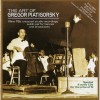

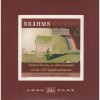
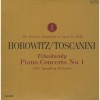
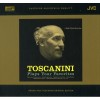
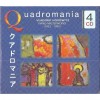
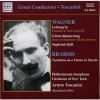
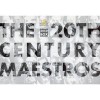
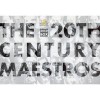
![Immortal Toscanini Vol 11 - Verdi, Cherubini: Choral Works [CD 1 of 2]](http://static.classicalm.com/repository/disk-cover/small/3156-img1383733680693414.jpg)
![Immortal Toscanini Vol 11 - Verdi, Cherubini: Choral Works [CD 2 of 2]](http://static.classicalm.com/repository/disk-cover/small/3158-img1383734082570894.jpg)
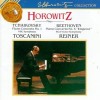
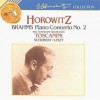
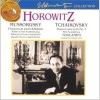
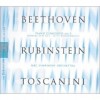
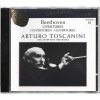
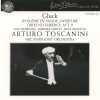
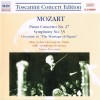
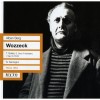
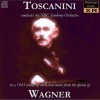
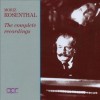
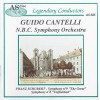
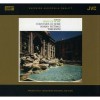
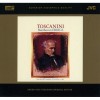
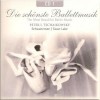
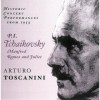
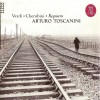
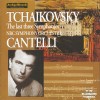
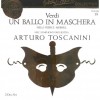
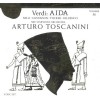
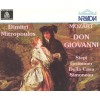
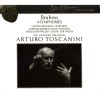
![Berg - Wozzeck [performed in Italian] (Tito Gobbi, Petre Munteanu, Dorothy Dow, RAI Roma Orchestra and Chorus & Nino Sanzogno) + BONUS](http://static.classicalm.com/repository/composition-cover/small/17195-img1383140396281441.jpg)
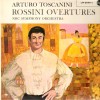
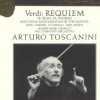
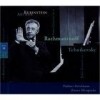
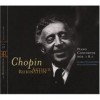
![The Heifetz Collection, Volume 5 [2 CD]](http://static.classicalm.com/repository/disk-cover/small/723-img1315251789683087.jpg)